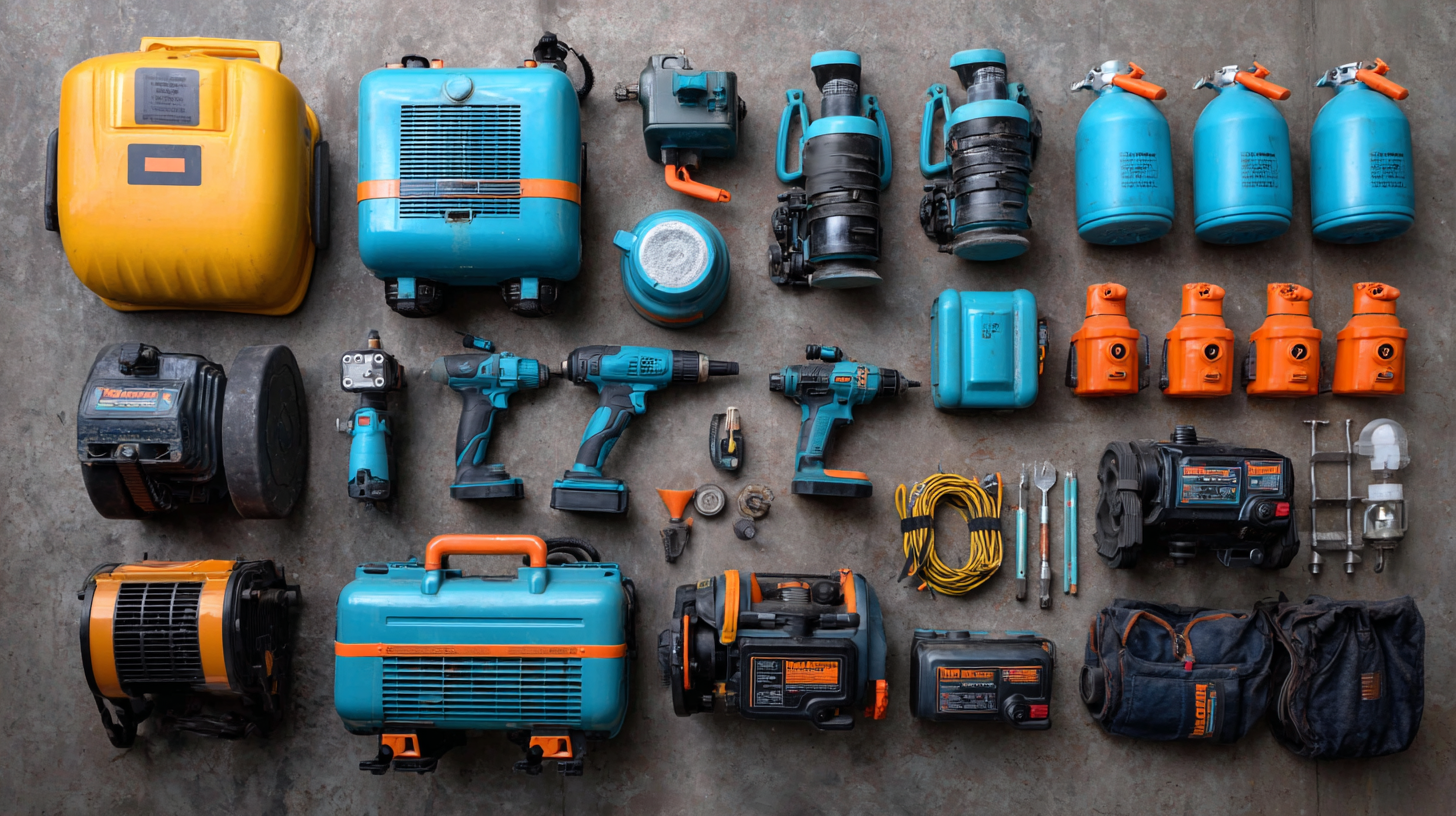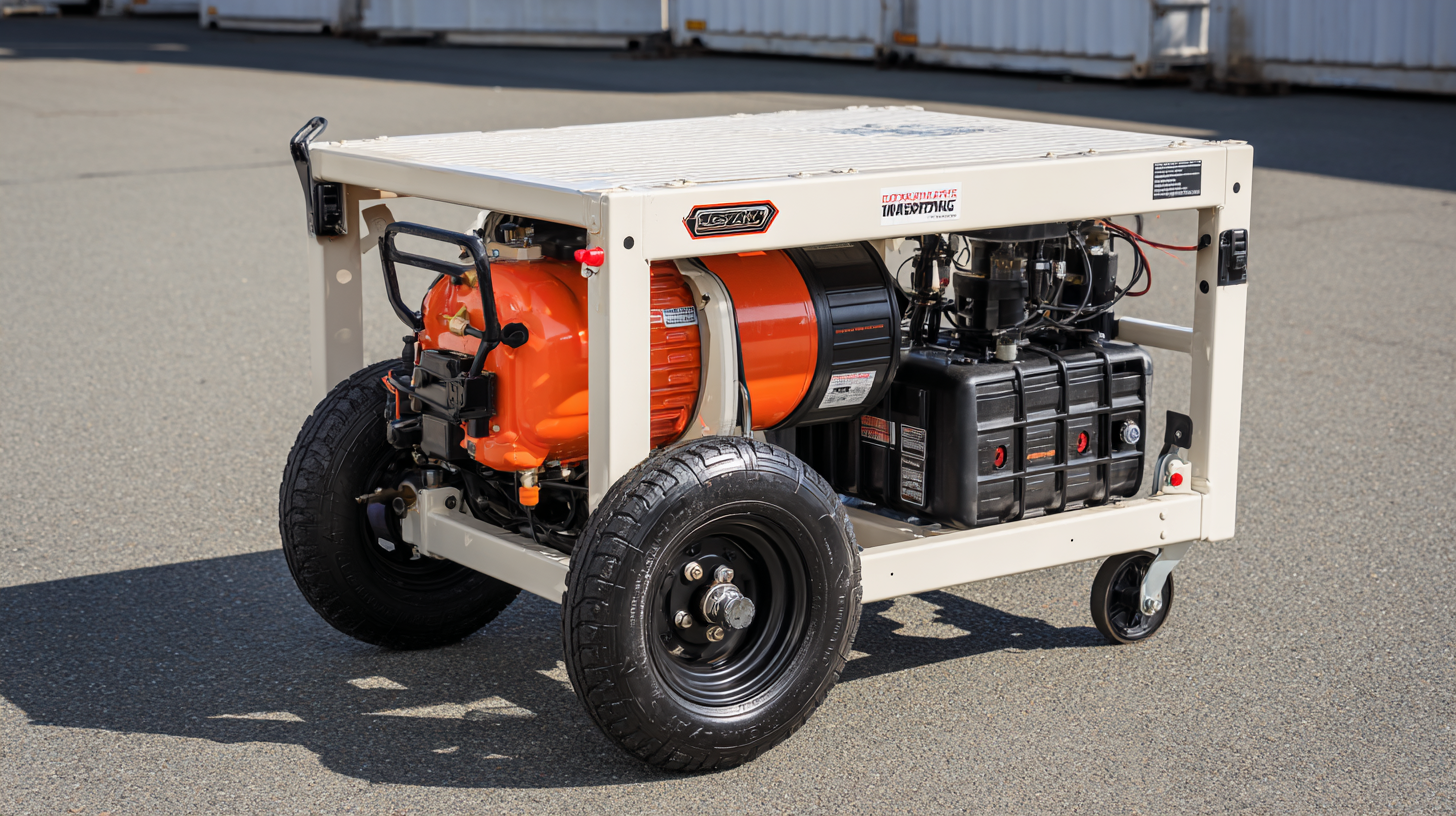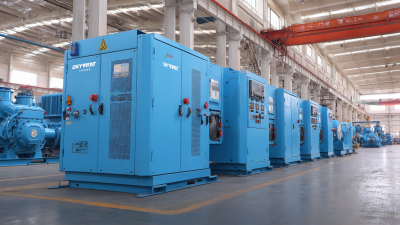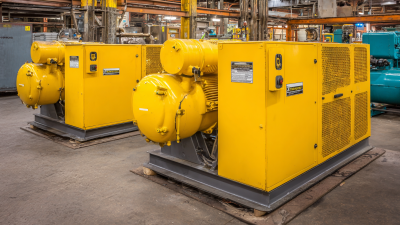Unlocking the Power of Portable Compressors: A Comprehensive Guide for Every DIY Enthusiast
In recent years, the demand for portable compressors has surged significantly, driven by the growing trend of DIY projects among homeowners and enthusiasts alike. According to a report by Grand View Research, the global air compressor market is expected to reach USD 49.46 billion by 2025, with portable models seeing a notable increase in popularity due to their versatility and ease of use. These handy tools not only offer power and efficiency but also enhance mobility, allowing users to complete various tasks—from inflating tires to powering pneumatic tools—wherever they are. As portable compressors become an essential addition to the toolkit of many DIY enthusiasts, understanding their features, applications, and maintenance is critical. This comprehensive guide aims to unlock the full potential of portable compressors, empowering you to tackle your next project with confidence and expertise.

Understanding the Basics of Portable Compressors: Types and Uses
Portable compressors are versatile tools that cater to various needs, making them essential for DIY enthusiasts. Understanding the basics of portable compressors involves recognizing their types and uses. Broadly, there are three main types: piston compressors, rotary screw compressors, and diaphragm compressors.
Piston compressors are popular among DIYers for their ease of use and ability to handle high pressure, making them ideal for inflating tires and powering pneumatic tools. In contrast, rotary screw compressors are more suited for continuous operation in professional settings, providing a steady air supply for larger tasks.
Each type of portable compressor serves specific functions, and selecting the right one is crucial for effective project completion. For instance, diaphragm compressors are lightweight and quiet, making them perfect for more delicate applications such as airbrushing or powering small air tools. Additionally, understanding the specifications—such as pressure output and tank capacity—affects performance and efficiency. By recognizing the function and appropriate application of each type, DIY enthusiasts can maximize the potential of portable compressors in their projects, leading to more successful and satisfying results.
Key Features to Consider When Choosing a Portable Compressor
When selecting a portable compressor, several key features are crucial for DIY enthusiasts looking to maximize efficiency and convenience. First and foremost, consider the compressor's PSI (pounds per square inch) rating. According to industry reports, a low PSI of around 90 is sufficient for simpler tasks like inflating tires, while heavy-duty applications may require ratings closer to 150 PSI. Another important aspect is the CFM (cubic feet per minute), which determines how quickly the compressor can deliver air. For instance, a CFM of 2.0 to 4.0 can be ideal for nail guns and airbrushes, while more demanding tools may need a CFM exceeding 5.0.
Tips: Always check the tool requirements against the compressor's specifications to ensure compatibility. Additionally, noise levels are a consideration; many portable compressors operate at 70 decibels or lower, which can significantly reduce disturbances during home projects.
Weight and portability are also vital when choosing a compressor, especially for those who need to transport their equipment. Compact models weighing around 30 to 40 pounds are generally easier to move, while larger models might offer more power but can be cumbersome. Research indicates that a well-balanced design with ergonomic handles can enhance mobility, making it easier for users to manage their tools efficiently on various job sites.

Benefits of Portable Compressors for DIY Projects and Home Improvement
Portable compressors are essential tools for DIY enthusiasts, offering a range of benefits that enhance home improvement projects. One of the primary advantages is their versatility. Whether you need to inflate tires, power pneumatic tools, or spray paint, a portable compressor can handle various tasks, making it an invaluable addition to your toolkit. Their compact size allows for easy transport and storage, meaning you can take them wherever your projects lead you, from garage work to outdoor spaces.
In addition to their versatility, portable compressors are user-friendly, often requiring minimal setup and maintenance. This simplicity makes them accessible for beginners as well as seasoned DIYers. With the ability to produce consistent air pressure, these compressors ensure that tools operate efficiently, saving you time and effort. Furthermore, many models are designed to be energy-efficient, helping to reduce electricity costs while still delivering powerful performance. This combination of convenience, efficiency, and portability solidifies the role of compressors as indispensable for anyone looking to tackle home projects with confidence.
Safety Tips for Operating Portable Compressors Effectively
When operating portable compressors, safety should always be the top priority. First and foremost, it’s essential to wear appropriate personal protective equipment (PPE). This includes safety goggles to protect your eyes from debris, hearing protection due to the compressor's noise levels, and gloves to prevent any skin injuries while handling tools. Moreover, ensuring that the compressor is placed on a stable surface minimizes the risk of tipping over, which can lead to accidents.
Another crucial aspect of safe operation is understanding the compressor’s pressure settings. Always adhere to the manufacturer’s specifications concerning the maximum pressure. Over-inflating can not only damage the tool or accessory being inflated but also result in dangerous blowouts. Regular maintenance checks on the air hoses and fittings are equally important – inspecting for wear or leaks helps prevent malfunctions during use. By following these guidelines, DIY enthusiasts can ensure they harness the power of portable compressors safely and effectively.
Unlocking the Power of Portable Compressors: A Comprehensive Guide for Every DIY Enthusiast - Safety Tips for Operating Portable Compressors Effectively
| Feature | Description | Safety Tips |
|---|---|---|
| Portability | Lightweight and easy to transport, suitable for various locations. | Always check weight limits when lifting or carrying. |
| Power Source | Can be powered by electricity or gas, providing flexibility. | Ensure proper ventilation when using gas-powered units. |
| Pressure Capacity | Typically ranges from 90 to 150 PSI for various tasks. | Use pressure settings appropriate for the tools being used. |
| Noise Level | Noise levels can vary; quieter models are available. | Wear hearing protection if operating a noisy compressor for extended periods. |
| Maintenance | Regular checks required for oil, filters, and hoses. | Follow manufacturer’s guidelines for maintenance schedules. |
| Applications | Suitable for powering pneumatic tools, inflating tires, and more. | Ensure tool compatibility with compressor specifications. |
Maintenance and Care for Longevity of Your Portable Compressor
 Maintaining your portable compressor is essential for ensuring its longevity and optimal performance. Regular maintenance tasks should include checking the oil levels, replacing the air filter, and inspecting hoses for wear and tear. Keeping the compressor clean, both internally and externally, helps prevent dust and debris from causing malfunctions. It’s important to follow the manufacturer's guidelines regarding maintenance intervals, as neglecting these routine checks can lead to costly repairs or a shortened lifespan of your equipment.
Maintaining your portable compressor is essential for ensuring its longevity and optimal performance. Regular maintenance tasks should include checking the oil levels, replacing the air filter, and inspecting hoses for wear and tear. Keeping the compressor clean, both internally and externally, helps prevent dust and debris from causing malfunctions. It’s important to follow the manufacturer's guidelines regarding maintenance intervals, as neglecting these routine checks can lead to costly repairs or a shortened lifespan of your equipment.
Another critical aspect of compressor care is proper storage. After each use, ensure that the unit is drained of moisture to prevent rust and corrosion, and store it in a cool, dry place. If your compressor has a removable tank, consider storing it separately to further reduce the risk of environmental damage. Finally, familiarize yourself with any specific maintenance protocols that pertain to your model, as different compressors may have unique requirements. By adhering to these practices, DIY enthusiasts can maximize the function and durability of their portable compressors, ensuring they’re always ready for the next project.
Related Posts
-

Global Export Powerhouse Producing the Finest Rotary Screw Air Compressors from China
-

Choosing Top Quality Manufacturers for Best Industrial Compressors
-

Unlocking Efficiency with Best Rotary Screw Air Compressors Technical Specs and Buying Guide
-

Unlocking Efficiency: The Advantages of Choosing Industrial Compressors for Your Business
-

7 Essential Tips for Sourcing High-Efficiency Air Compressors: Maximize Your ROI!
-

7 Essential Tips for Choosing the Right Air Compressors for Your Business


